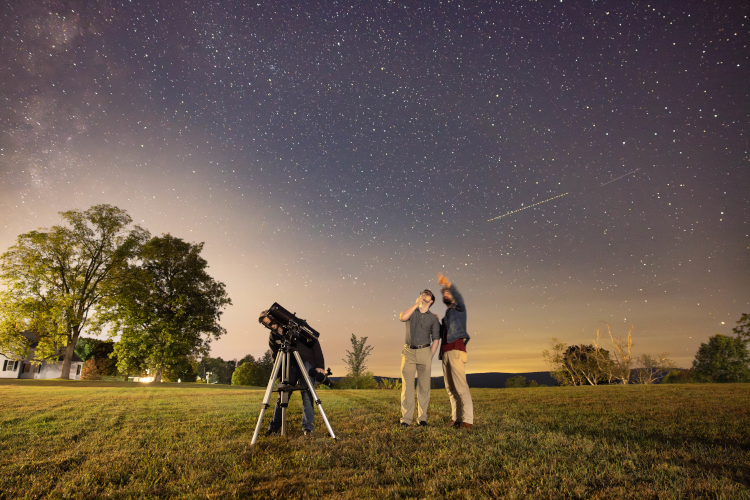While reading Ptolemy’s Almagest, the sophomores work on the beloved “Star Project,” a series of careful observations of the heavenly bodies. They choose a star and watch it set for several consecutive evenings, noting the time and location where it dips below the horizon in order to see Ptolemy’s ideas in action. They also observe the subtle motion of the heavens, track the sun’s progressions, and identify Polaris, the North Star. “It’s just so amazing to me that, for thousands of years, people have been navigating using Polaris,” says Kienan McManus (’27).
Many nights this fall found students on the New England campus sprawled on the grass by their residence halls, looking up at the sky with wonder. Upperclassmen speak fondly of their experience with the assignment. “I loved doing the star project my Sophomore Year,” says Laura Castillo (’26). “My roommate and I would go out stargazing every night and just marvel at the sky.”
Even after the completion of the project, students are left with a deep sense of appreciation for the workings of the heavens. “The universe is fascinating,” says Gerald Faist (’27). “I can’t wait to keep learning about it!”



















